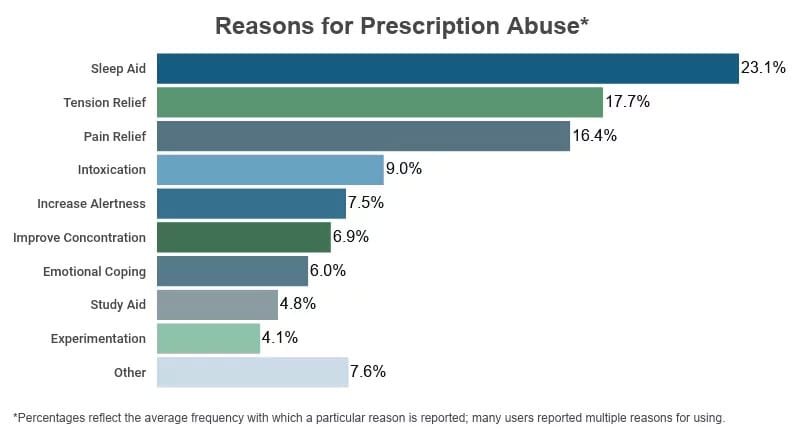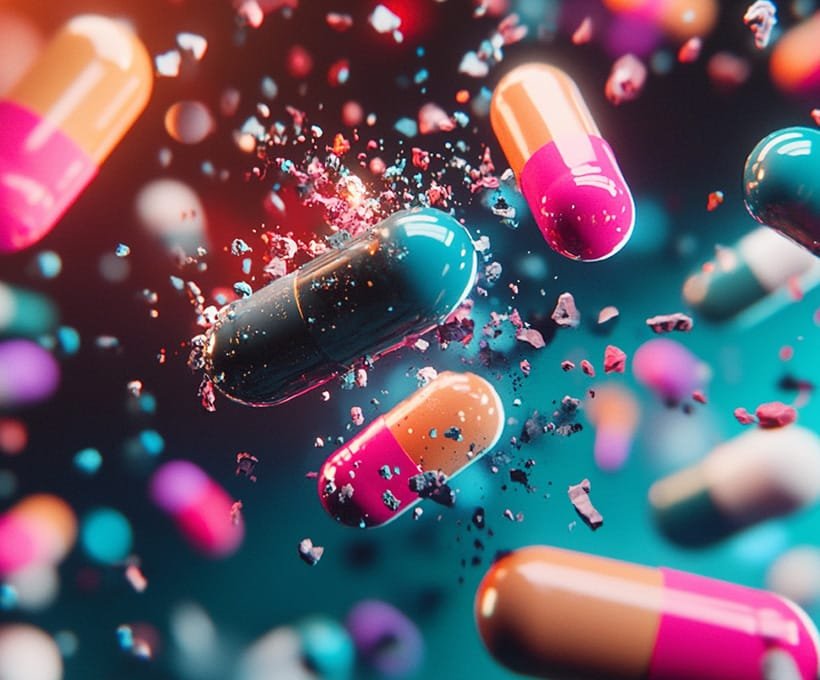A Better Way Forward
Prescription drug abuse—especially for pain relief—has fueled a national crisis. From 1992 to 2002, prescriptions in the U.S. rose by 61%, while opiate prescriptions surged nearly 400%. What began as a trend in pain treatment became a wave of addiction, fractured families, and preventable loss.
We can do better. Healthy pain relief is possible—without the long-term risks of medication dependence.
The Problem With Prescription Drug Dependence

Pain is one of the top reasons people seek medication. But over time, many find themselves relying on prescriptions that were never meant for long-term use. According to the NCDAS, pain relief is one of the top three reasons for prescription drug abuse.
Despite this, natural self-management strategies remain underused. The result? More people dependent on medication, often with limited improvement in their actual pain.
We need a new model—one that emphasizes drug-free, sustainable pain relief.
Why Pain Relief Should Be Personalized
The Institute of Medicine’s Relieving Pain in America report confirms that pain is one of the most common reasons for doctor visits, that chronic pain significantly impacts daily life and emotional well-being, and that medication doesn’t always resolve the problem. The report emphasizes that pain care must be individualized—a key takeaway supported by this comprehensive review.
Pain care must be individualized. That’s where Relaxation Therapy, a core practice of the Mulry Method, becomes essential.
Relaxation Therapy: A Drug-Free Path To Pain Relief
Relaxation Therapy is a science-based approach that activates the parasympathetic nervous system—reducing stress hormones, calming the body, and releasing tension.
Unlike medications that mask symptoms, Relaxation Therapy helps you manage pain by:
- Slowing the stress response
- Supporting emotional regulation
- Re-establishing mind-body connection
- Reducing physical discomfort at the source
With regular practice, it becomes a tool for self-regulation—giving you back a sense of clarity and control.
👉 Explore the Full Collection of Relaxation Therapy Recordings
The Mulry Method: An Integrated Approach
The Mulry Method combines Relaxation Therapy with other self-care tools to help you build lasting change:
- The Personal Concerns Inventory (PCI) helps identify root stressors and personal challenges
- In The Zone Skills Training supports performance, adaptability, and focus under pressure
This full-system approach fosters emotional resilience, self-awareness, and the ability to manage pain without reaching for a prescription.
👉 Learn about the Self-Care Series
👉 Use the Personal Concerns Inventory
👉 Explore In The Zone Skills Training
Break The Cycle Of Dependence
Pain is real—but long-term medication dependence doesn’t have to be your only option.
By learning to manage pain through natural methods, you can:
- Calm your nervous system
- Reduce physical and emotional stress
- Avoid the risks of long-term prescription drug use
- Restore a sense of internal control
Frequently Asked Questions
It calms the nervous system, lowers stress hormones, and promotes natural pain relief—without the side effects of medication.
Use it at the first sign of tension or pain, or as a regular daily practice—especially during high-stress or physically demanding periods.
The Mulry Method integrates Relaxation Therapy with psychological tools like the Personal Concerns Inventory (PCI) and In The Zone Skills Training. It supports individualized care by helping you identify root concerns, clarify goals, and take focused action.
Start Your Recovery With Healthy Pain Relief
You can stop the cycle of prescription dependence and reclaim your health. Begin with free tools and techniques designed to support your healing—naturally.
👉 Get started with Relaxation Therapy today

